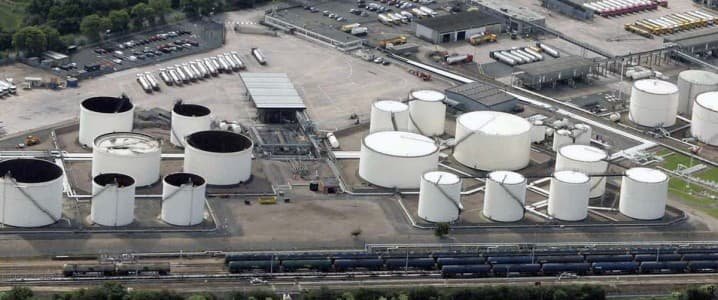Last week, the International Energy Agency reported that global oil demand growth is losing momentum, with demand growth clocking in at 1.4 mb/d in January, down from 2.8 mb/d in 3Q23 to 1.8 mb/d in 4Q23. According to the IEA, the expansive post-pandemic demand growth phase has largely run its course. Thankfully, falling supply is expected to counter slowing demand growth with non-OPEC supply by the U.S., Brazil, Guyana, and Canada expected to come in at 1.6 mb/d this year compared to 2.4 mb/d in 2023.
The best part for oil bulls, however, is that oil markets are tightening, which could help sustain the ongoing oil price rally. The IEA has revealed that global observed oil stocks plummeted by about 60 mb in January, with on-land inventories falling to their lowest level since 2016. In contrast, December global stocks rose by 21.6 mb thanks to a surge in oil on water (+60.7 mb) more than offsetting draws in on-land inventories (-39 mb). Brent crude has rallied 7.9% so far in the month of February to trade at $83.42 per barrel while WTI crude has gained 9.9% to trade at $79.43 per barrel.
Whether or not the markets will continue tightening will largely depend on whether OPEC+ can maintain discipline and unwind its production cuts gradually. Estimates by various energy agencies of changes in the call on OPEC; i.e. the level of OPEC crude oil output that would keep inventories constant given changes in non-OPEC supply, oil demand, and OPEC non-crude liquids supply are quite varied at this point.
Related: Unsustainably Low Lithium Prices Set the Stage for the Next Supply Crunch
With the exception of the IEA, estimates of the call on OPEC have generally trended upwards, implying an improvement in overall market fundamentals. These figures represent how much OPEC could increase output from Q2 onwards without global inventories increasing The lowest estimates are those of the Energy Information Administration (EIA) at 0.6 million barrels per day (mb/d) and the IEA at 0.7 mb/d, while the highest estimates are by Standard Chartered at 1.8 mb/d and the OPEC Secretariat at 2.7 mb/d.
Source: Standard Chartered Research
Brent Could Approach $100
Previously, commodity analysts at Standard Chartered have argued that oil fundamentals are in better shape than oil prices suggest, adding that the market is heavily discounting geopolitical risks. StanChart has noted a sharp improvement in oil balances in the current year compared to 2022
According to StanChart, the small global oil surplus we are currently witnessing is due to seasonal weakness in the month of January, noting that the surplus is much smaller than the 20-year average. StanChart has revealed that there’s been a January inventory draw in only three years since 2004, with the first month of the year averaging a build of 1.2 million barrels per day (mb/d). Last year, the month of January recorded a mega-surplus to the tune of 3.4 mb/d; the third largest surplus in any month over the past two decades. StanChart puts this year’s January surplus at just 0.3 mb/d.
StanChart says Brent price is supposed to hit at least $90 per barrel to truly reflect market fundamentals. StanChart has predicted that Brent will average $92 a barrel in the first quarter, good for a 19% jump from Dec. 31. The analysts have forecast that Brent will hit $98 per barrel in the third quarter; $109 in 2025 and $128 in 2026 before pulling back to $115 in 2027. ICE Brent futures gained $5/bbl during January, marking their first monthly gain since September.
J.P. Morgan is another oil bull, and says the oil market outlook “continues to project a tightening market with prices rising from here by another $10 by May.”
JPM’s forecast assumes that OPEC+ leaders will unwind 400K bbl/day of cuts from April but has not assigned a risk premium from the Middle East turmoil. JPM says crude shipments on a 30-day moving average basis are down 1.3M bbl/day from the October peak.
The U.S. Energy Information Administration (EIA) is much less optimistic, and has projected Brent to average $82.42 in 2024 and $79.48 in 2025 while WTI will average $77.68 a barrel for 2024 and $74.98 in 2025.
By Alex Kimani for Oilprice.com




